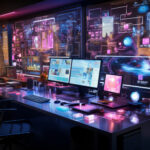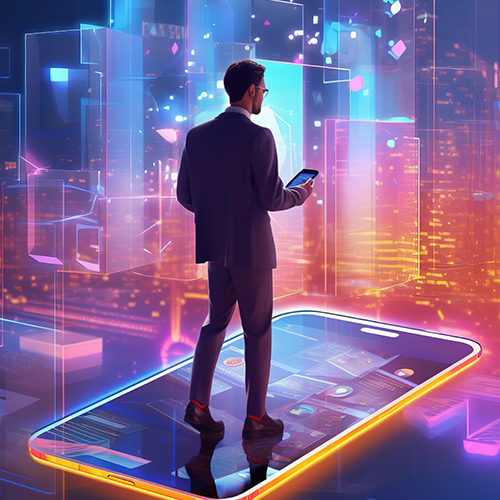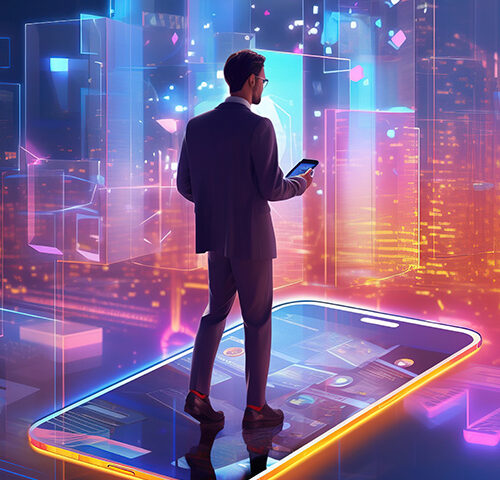
CTV and Multiscreen Engagement: Creating a Seamless Brand Experience
February 7, 2025
The Rise of Retail Media Networks: Opportunities for Brands
February 11, 2025
AI-Powered Creative Optimization: Revolutionizing Programmatic Advertising
In today’s hyper-connected digital world, personalization is no longer a luxury—it’s an expectation. As brands strive to deliver more relevant and impactful messaging, AI-powered creative optimization has emerged as a game-changer in the programmatic advertising ecosystem. By blending automation, data, and artificial intelligence (AI), marketers can now deliver real-time personalized ad experiences that drive better engagement and higher return on investment (ROI).
In this blog, we’ll dive into how AI is revolutionizing creative optimization in programmatic advertising and why it’s crucial for brands aiming to stay ahead in the digital marketing race.
What is AI-Powered Creative Optimization?
At its core, AI-powered creative optimization refers to the use of machine learning algorithms and data analytics to dynamically adapt and improve digital ad creatives in real time. These systems analyze vast amounts of data—user behavior, demographics, time of day, device type, location, and more—to determine which version of an ad will perform best for a specific audience segment.
Unlike traditional A/B testing, AI-driven creative optimization continuously learns and evolves. It doesn’t just test static variants—it adapts on-the-fly, selecting the best combination of visuals, copy, and CTAs (calls to action) based on real-time performance data.
The Intersection of AI and Programmatic Advertising
Programmatic advertising is already known for its ability to automate ad buying using algorithms. When AI is added to the mix, especially in the creative process, it supercharges campaign performance by:
- Improving efficiency: Reducing the manual effort involved in testing and optimizing creatives.
- Enhancing personalization: Delivering tailored messages to micro-audiences at scale.
- Boosting ROI: Increasing relevance and engagement, leading to better conversions.
AI turns programmatic from a media-buying automation tool into a holistic advertising engine capable of optimizing creative content just as dynamically as audience targeting and bidding strategies.
Key Benefits of AI-Powered Creative Optimization
1. Hyper-Personalized Ads at Scale
AI enables advertisers to create thousands of ad variations and automatically match the right creative to the right audience. This level of personalization boosts user engagement by ensuring that ads resonate with individual users’ interests, behaviors, and preferences.
2. Real-Time Performance Optimization
Traditional creative testing methods are often reactive. AI, on the other hand, acts proactively by analyzing live campaign data and making adjustments in real time. Whether it’s switching an image, tweaking a headline, or repositioning a CTA, AI ensures every impression counts.
3. Faster Time to Market
With automated creative testing and dynamic rendering, campaigns can go live faster without weeks of manual A/B testing. Brands can launch, learn, and optimize within hours—not days or weeks.
4. Reduced Wastage and Higher Efficiency
By delivering the most effective creatives to the right audiences, AI helps minimize wasted impressions and budget. Poor-performing creatives are quickly phased out, and budgets are shifted towards higher-performing variants.
Use Cases Across Industries
Retail: AI can tailor product ads based on a shopper’s browsing or purchase history, boosting conversions.
Travel & Hospitality: Personalized destination ads based on season, weather, or user location can drive bookings.
Real Estate: AI-powered platforms can serve different ad creatives depending on the user’s budget, location preferences, or property interests.
Auto: A car ad might show different features based on whether the viewer values safety, speed, or sustainability.
Tools and Platforms Making It Happen
Several platforms and ad tech tools offer AI-powered creative optimization, including:
- Google Display & Video 360 (DV360): Uses machine learning for creative testing and optimization.
- Adobe Sensei: Offers automated creative design and personalization.
- Dynamic Creative Optimization (DCO) platforms like Flashtalking, Celtra, and Smartly.io: These specialize in scalable, real-time creative personalization.
Challenges and Considerations
While AI offers immense potential, it’s not without challenges:
- Data Privacy Compliance: Personalization must comply with regulations like GDPR and CCPA.
- Creative Fatigue: Too much variation can dilute brand consistency. Maintaining a balance between personalization and branding is crucial.
- Algorithm Transparency: Marketers need to understand how AI decisions are made to trust and optimize campaigns effectively.
The Future of Creative in Programmatic Advertising
As AI continues to evolve, so will its ability to understand not just who the user is, but why they engage with certain messages. Emotion detection, contextual analysis, and predictive modeling will further refine how creatives are delivered.
Brands that embrace AI-powered creative optimization now will gain a competitive edge by offering meaningful, timely, and relevant ad experiences that truly connect with their audience.
Final Thoughts
AI-powered creative optimization is not just a trend—it’s the future of programmatic advertising. With the ability to deliver hyper-personalized, real-time ad experiences, it bridges the gap between creative storytelling and data-driven precision.
For marketers and advertisers, the message is clear: Adapt to AI-driven creative strategies now, or risk falling behind in an increasingly dynamic and competitive landscape.
Keywords: AI-powered creative optimization, programmatic advertising, real-time personalization, dynamic creative optimization, AI in digital marketing, personalized advertising, ad tech, machine learning in advertising

